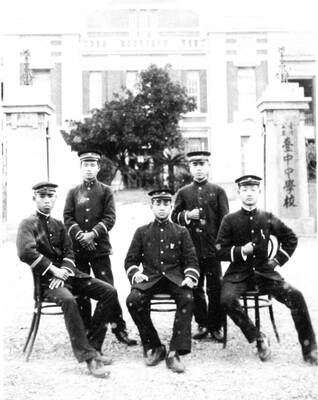The National Palace Museum's (國立故宮博物院) collection of Chinese imperial artifacts is said to exceed 600,000 items, some of which date back to the dawn of Chinese history. Its journey to Taiwan, a trek through war-torn China, is the stuff of legend. Most visitors to the museum see a facade; the museum keeps its secrets behind closed doors, with access to its inner sanctum, the vaults in which the collection is stored, restricted to only a select few.
Over the last two years, the National Geographic Channel (NGC) has taken its cameras into the vaults buried deep in the mountains and into the laboratories where the work of conservation and restoration goes on. They have also interviewed the scholars, scientists and curators who are the beating heart of the museum. This makes Inside: The Emperor's Treasure a must-watch for anyone intrigued by what lies behind the iconic building in Waishuangxi (外雙溪). The show premieres in English in Taiwan on the NGC at 9pm Sunday. A Chinese version will be broadcast on Saturday, Nov. 3 at 9pm.
Joanne Tsai (蔡秋安), general manger of NGC's Taiwan office, said in an interview with the Taipei Times that hammering out the blueprint for telling the story was one of the most difficult parts of the project, which took nearly two years to complete. "They gave us so much material, but we needed to tell a story that would draw people in. We did not want to be a catalog," she said.
According to the NPM's director, Lin Mun-lee (林曼麗), the access granted to NGC is part of a wider museum policy of engagement and strategic cooperation with commercial interests designed to make the NPM more accessible to the younger generation.
Although the museum must ensure the safety of its collection when brought out of the vaults for display to the public, a greater fear, highlighted in Inside: The Emperor's Treasure is that people will stop coming.
While the NPM is unlikely to run out of things to display, providing interactive experiences has posed a great challenge. Now, digitalization, 3-D mapping and virtual reality manipulation, which are often used in research, provide a fresh, hands-on museum experience for visitors.
Inside: The Emperor's Treasure uses a light touch, focusing on the people involved in the museum and reenactments of the Qianlong emperor (乾隆), one of China's greatest collectors of art. By linking up the personalities who make the huge art project that is the NPM, Inside: The Emperor's Treasure presents potentially tedious subjects in a fascinating light.

In the March 9 edition of the Taipei Times a piece by Ninon Godefroy ran with the headine “The quiet, gentle rhythm of Taiwan.” It started with the line “Taiwan is a small, humble place. There is no Eiffel Tower, no pyramids — no singular attraction that draws the world’s attention.” I laughed out loud at that. This was out of no disrespect for the author or the piece, which made some interesting analogies and good points about how both Din Tai Fung’s and Taiwan Semiconductor Manufacturing Co’s (TSMC, 台積電) meticulous attention to detail and quality are not quite up to

April 28 to May 4 During the Japanese colonial era, a city’s “first” high school typically served Japanese students, while Taiwanese attended the “second” high school. Only in Taichung was this reversed. That’s because when Taichung First High School opened its doors on May 1, 1915 to serve Taiwanese students who were previously barred from secondary education, it was the only high school in town. Former principal Hideo Azukisawa threatened to quit when the government in 1922 attempted to transfer the “first” designation to a new local high school for Japanese students, leading to this unusual situation. Prior to the Taichung First

Chinese Nationalist Party (KMT) Chairman Eric Chu (朱立倫) hatched a bold plan to charge forward and seize the initiative when he held a protest in front of the Taipei City Prosecutors’ Office. Though risky, because illegal, its success would help tackle at least six problems facing both himself and the KMT. What he did not see coming was Taipei Mayor Chiang Wan-an (將萬安) tripping him up out of the gate. In spite of Chu being the most consequential and successful KMT chairman since the early 2010s — arguably saving the party from financial ruin and restoring its electoral viability —

The Ministry of Education last month proposed a nationwide ban on mobile devices in schools, aiming to curb concerns over student phone addiction. Under the revised regulation, which will take effect in August, teachers and schools will be required to collect mobile devices — including phones, laptops and wearables devices — for safekeeping during school hours, unless they are being used for educational purposes. For Chang Fong-ching (張鳳琴), the ban will have a positive impact. “It’s a good move,” says the professor in the department of